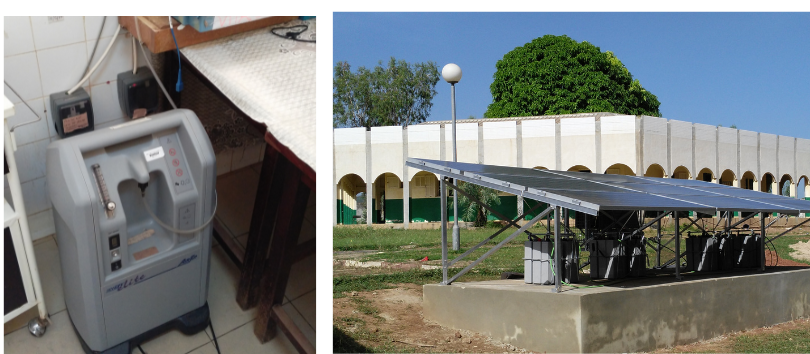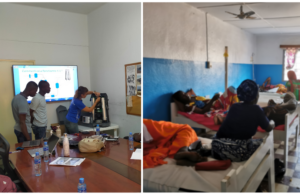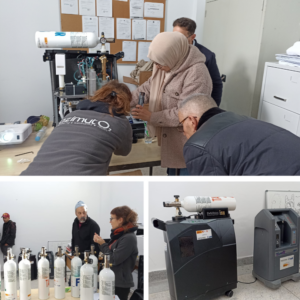Reading time: 3 mins

Ensuring Universal Access to Medical Oxygen: A Key Investment for Global Health
According to the latest report from The Lancet Global Health Commission on Medical Oxygen Security, more than 5 billion people (60% of the world’s population) do not have guaranteed access to safe and affordable medical oxygen. This is an often-overlooked issue, yet it causes hundreds of thousands of preventable deaths each year and affects millions of patients with critical medical needs.
Here are the key findings from the report:
- Extreme inequality persists. Low- and middle-income countries (LMICs) continue to be the most affected, with only 30% medical oxygen coverage for patients with acute needs.
- Additionally, the demand for medical oxygen continues to rise. Every year, 374 million patients require medical oxygen, particularly for respiratory diseases, surgeries, and intensive care.
- Healthcare infrastructure deficiencies must also be addressed. Only 45% of patients with hypoxemia receive oxygen in general hospitals in LMICs, while in primary healthcare centers, 93% experience shortages.
- One of the major issues is the insufficient use of pulse oximetry. Pulse oximetry is a non-invasive technique that measures blood oxygen levels using a fingertip device, enabling early detection of hypoxemia and ensuring appropriate medical care. Despite being available in some hospitals, it is only used in 19% of patients in general hospitals and 54% in tertiary hospitals.
- Pulse oximetry is essential for safe and affordable medical care and should be integrated into clinical protocols and healthcare training to ensure its proper use at all levels of care.
- The study highlights the urgent need for investment in the sector. Currently, an estimated $6.8 billion annually is required to ensure universal access to medical oxygen in low-resource countries.
Medical Oxygen as a Strategic Investment
The report emphasizes that ensuring access to medical oxygen is a highly cost-effective measure, comparable to childhood vaccination ($59 per DALY averted). This investment would accelerate progress toward 8 out of the 9 Sustainable Development Goals (SDGs) related to health and improve preparedness for future pandemics.
The Impact of Our Projects on Healthcare Training
To address this crisis, training healthcare personnel is essential. For this reason, one of the core pillars of our actions is capacity building. Through our projects:
- We train medical staff in the use of oxygen therapy and oxygen concentrators to ensure safe and efficient application.
- We implement training in pulse oximetry, improving the detection and response to hypoxemia in resource-limited settings.
By training healthcare workers, we aim to strengthen the sustainability of the healthcare system, equipping professionals with the tools and knowledge to mitigate oxygen shortages.
Case Study 1: Kotiakró Project, Côte d’Ivoire

Through the project Ensuring the Right to Health in the Kotiakró Community, we are working to reduce shortages and improve access to essential healthcare services. This project includes training local healthcare staff in the proper use of oxygen concentrators and pulse oximetry, ensuring that critical patients receive adequate treatment.
As part of the project, a photovoltaic solar power system was installed to provide continuous electricity to oxygen concentrators 24/7, ensuring the availability of this life-saving medical treatment in the health center and maternity ward.
Case Study 2: Morocco Project – Ambulance Medicalization

In rural areas of Morocco, the lack of medical oxygen during patient transport poses a severe risk to critically ill patients. To address this issue, Azimut 360, in collaboration with the Chefchaouen Health Delegation and our local partner ADL, has developed a healthcare project to equip ambulances in the province with oxygen cylinders. These cylinders can be refilled locally at the Provincial Hospital once patients are transferred from rural health centers, preventing supply chain disruptions for remote locations.
Key Recommendations from The Lancet Global Health Report
Our engineer Mireia Gil contributed as an author to this study, from which we draw some key recommendations:
- Develop national plans to reduce the gap in access to medical oxygen.
- Mobilize international funding and increase collaboration with the private sector.
- Include pulse oximetry and medical oxygen as essential indicators in global healthcare databases.
- Promote innovative solutions in sustainable healthcare technology and infrastructure.
Access to medical oxygen is a matter of global health equity. With a well-defined strategy and political commitment, it is possible to ensure that no patient dies due to the lack of this essential resource. Now is the time to act.